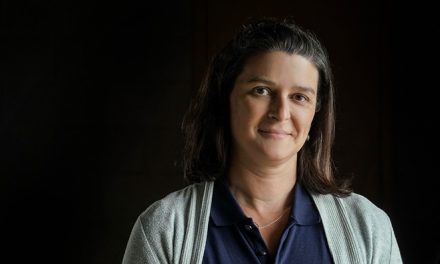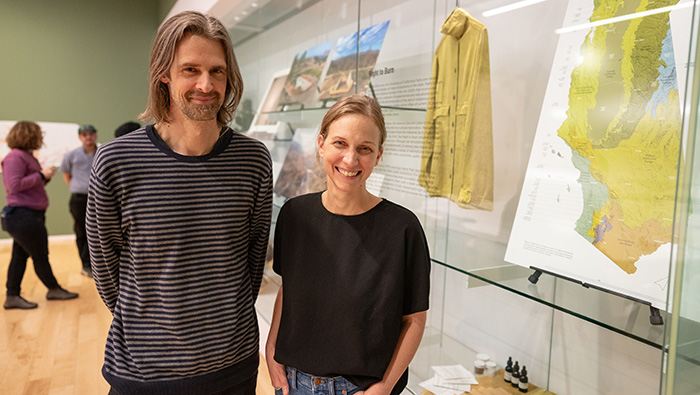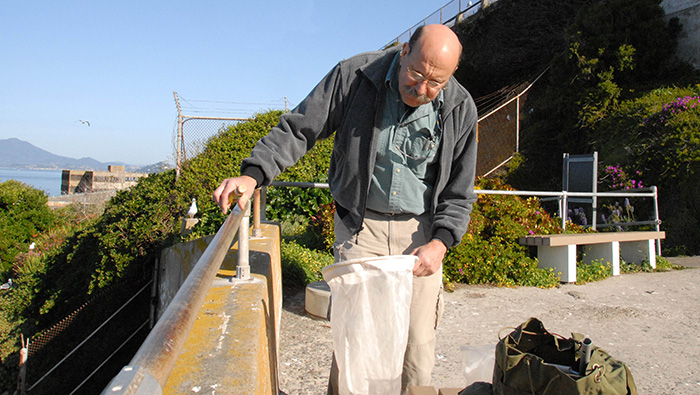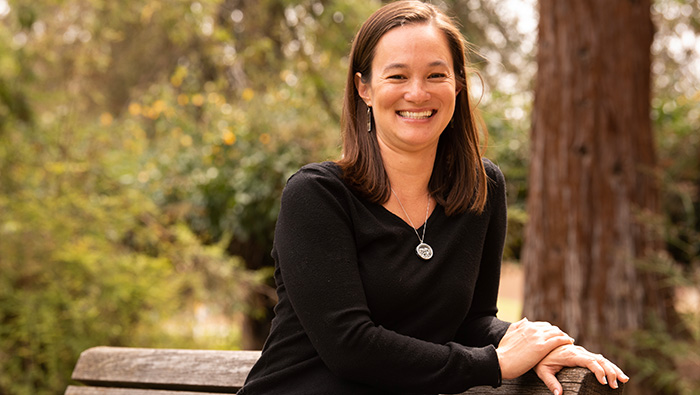
Are We Prepared for ‘The Big One?’
Inside the Center for Geotechnical Modeling at UC Davis, a 9-meter-long centrifuge can spin a bucket, with a weight limit of 4,500 kilograms, at an acceleration of 75 times the force of gravity. Simultaneously, a shaking table below the setup replicates intense and prolonged earthquakes.
This geotechnical centrifuge offers one way for researchers to experimentally study earthquake impact. “Our challenge is deciding how real infrastructure responds,” said Ross Boulanger, a professor in the Department of Civil and Environmental Engineering and the director of the Center for Geotechnical Modeling. Funded through the National Science Foundation, the centrifuge facility is part of the Natural Hazards Engineering Research Infrastructure shared-use network, welcoming researchers from across the nation.
California is experienced when it comes to earthquakes. In recent decades, the state has built infrastructure keeping in mind its shaky history. Despite improved building standards, preparedness for “the big one” — and other earthquakes — depends on efforts, responses and recovery on a communitywide scale.
Highways, bridges, ports and subway systems, while all part of the infrastructure of major urban areas, will be affected by earthquakes, big or small, in myriad ways. “How do you prepare any one of those infrastructure elements to better withstand an earthquake?” said Boulanger. “Well, for every different kind of infrastructure, there’s a different answer.”
To replicate the impact of an earthquake, scientists can house a built-to-scale model of infrastructure within the centrifuge’s bucket and see how it deforms through an earthquake. The high-speed spinning and shaking thrust upon the model help mimic quaking impact on a life-size structure. Physical modeling of this sort can validate analytical software tools and improve their prediction accuracy. Beyond this, scientists can evaluate solutions to withstand earthquakes.
In this manner, Boulanger has modeled a possible solution to prevent dam failure. Earthquakes can liquefy loose soil the same way wet sand temporarily weakens under your feet at the beach. Decades-old dams built on soft soils can be prone to failure during earthquakes. Boulanger’s team tested the ability of walls made of cement mixed in with soil, known as soil-cement, placed at the foot of the dam to stop it from shifting during an earthquake. By creating an experimental model and testing it with the help of the centrifuge, they were able to assess any damage in meticulous detail. Using multiple sensors, the model’s response could be matched to the computer simulation and provide finer details.
Building for earthquakes
Structural integrity and vulnerability inform earthquake risk and impact. Scenario studies, crafted by experts from various fields of research, can gauge the level of risk involved and help inform the public and guide policy. A scenario study for a magnitude 9.0, or “the big one,” along the Cascadia Subduction Zone, is estimated to result in more than 10,000 deaths, 30,000 injuries and an economic loss of $70 billion for the states of Washington, Oregon and California. In a different scenario study for the New Madrid Seismic Zone that stretches across Southern and Midwestern states, a magnitude 7.7 earthquake is predicted to lead to 3,500 fatalities, 82,000 injuries and economic losses of $300 billion.
“On the West Coast, we’ve been building for earthquakes for 50 years,” said Daniel Wilson, associate director of the CGM. That helps explain why the predicted damages from an earthquake along the Cascadia Subduction Zone may be lesser than any sustained in mid-America. “[There,] they’ve never thought earthquakes were a major hazard — they did not build the infrastructure.”
Lessons from earthquakes past
With California bearing witness to numerous major earthquakes over the course of its recorded history, building codes have been updated to reflect lessons learned. The 1971 San Fernando and 1994 Northridge earthquakes resulted in soft story collapses and cracking in steel-frame buildings, leading to building code revisions across cities in California.
“We’ve made very specific and tangible improvements in how we design our buildings,” said Amit Kanvinde, a professor in the Department of Civil and Environmental Engineering. As a structural engineer, Kanvinde uses software to model how a building, for example, would respond to being shaken by a specific earthquake. Using OpenSees, a proprietary software, Kanvinde can model a bridge, building or other structure being shaken by ground motions. This software can predict if a building will collapse or simply suffer damage — and even characterize the damage. Changes to building standards require money and time to be implemented, and while California does a lot of things right, there’s always room for more improvements, Kanvinde said.
Creating societal awareness and preparedness
Besides retrofitting existing structures and building newer structures to code, awareness and preparedness at a societal level can help California mitigate earthquake impact. Awareness needs to drive public policy as well as concrete action at the government, community and private levels. For instance, the annual Great California ShakeOut encourages community and individual preparedness through earthquake drills.
Even as California grows more prepared for what may lie ahead, “We’ve been building our urban areas for many decades, and you can’t go and fix all that infrastructure in a short period of time,” said Boulanger. “It’s going to take our lifetimes.”









